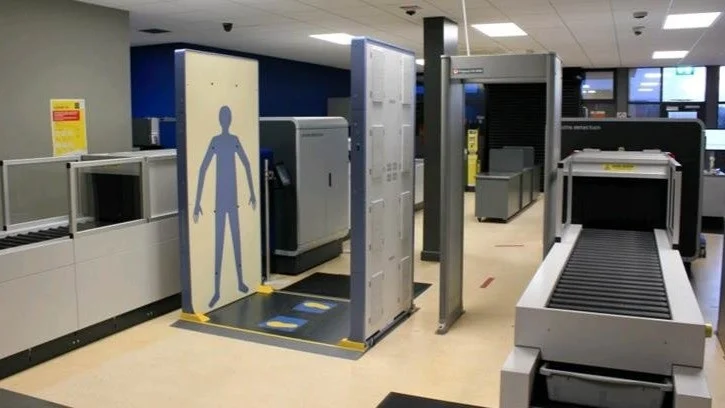Osteosarcoma is a rare but aggressive bone cancer that mostly affects children and young adults. Scientists use special tools called U2OS cells to better understand and fight this tough disease. These cells come from a 15-year-old girl’s bone tumor and help researchers figure out how osteosarcoma works and how to treat it. Let’s learn more about how these amazing cells are helping scientists solve the puzzle of bone cancer and make new discoveries!
| Key Takeaways |
| • U2OS cells are derived from a teenage girl’s osteosarcoma and are crucial for bone cancer research • These cells help scientists study tumor growth, test new medicines, and understand cancer cell behavior • U2OS cells are instrumental in developing personalized cancer treatments and combination therapies • Researchers are exploring 3D cell cultures and advanced genetic tools to enhance the utility of U2OS cells • While U2OS cells have limitations, they remain a cornerstone in advancing osteosarcoma research and treatment |
Table of Contents
ToggleWhat Are U2OS Cells?
U2OS cells are like tiny helpers in the lab. They were first collected in 1964 from a teenage girl’s shin bone tumor. These cells are special because they can grow and divide quickly, just like cancer cells do in the body. Scientists use them to study how bone cancer grows and spreads. Their ability to grow fast and keep their genetic features makes them perfect for cancer research.
U2OS cells look flat with a big area around the nucleus. This shape makes them easy to see under a microscope. Scientists can watch these cells closely, which helps them understand what’s happening in real bone tumors. The fact that U2OS cells are easy to see and work with has made them very popular in cancer research labs all over the world.
How U2OS Cells Help in Osteosarcoma Research
These special cells are like detectives, helping scientists solve the mystery of osteosarcoma. They’re useful in many ways for cancer research. Here’s how they help us understand bone cancer better:
1. Studying How Tumors Grow
U2OS cells show scientists how tumors start and get bigger. By watching these cells, researchers can find out what makes cancer cells grow out of control. This knowledge helps in making treatments that can stop or reverse tumor growth in patients with osteosarcoma.
2. Testing New Medicines
Before trying new cancer treatments on people, scientists test them on U2OS cells. This helps them see if a new drug might work and if it’s safe. By looking at how U2OS cells react to different drugs, researchers can guess how real osteosarcoma might respond, which makes finding good treatments easier.
3. Understanding Cell Life and Death
Cancer cells don’t die when they’re supposed to. U2OS cells help scientists study why this happens. By changing these cells and seeing what happens, researchers can learn how to make cancer cells die while keeping healthy cells alive. This is important for making better cancer treatments.
4. Looking at Cancer Genes
U2OS cells let scientists study the genes that cause osteosarcoma. They look at genes that make cancer grow and genes that stop cancer. By changing genes in U2OS cells, researchers can find out which ones are important in bone cancer. This helps them make treatments that target specific problems in cancer cells.
Epithelial Morphology
U2OS cells have a flat, adherent structure typical of epithelial cells, making them ideal for microscopy studies.
High Proliferation Rate
These cells divide rapidly, allowing researchers to quickly generate large cell populations for experiments.
Genetic Stability
U2OS cells maintain consistent genetic characteristics over multiple passages, ensuring reliable experimental results.
Versatile Research Applications
Used in various studies including drug discovery, cancer biology, and gene function analysis.
U2OS Cells in Making New Medicines
Creating new cancer treatments is like building with LEGO blocks – you need the right pieces. U2OS cells are important pieces in this process, helping to make new drugs and personalized treatments:
1. Finding New Treatments
Scientists use U2OS cells to test lots of different chemicals quickly. This helps them find new drugs that might work against cancer. U2OS cells are great for this because they grow well and are similar to real osteosarcoma tumors.
2. Personalized Cancer Treatment
Everyone’s cancer is a bit different. By studying U2OS cells and comparing them to samples from patients, researchers can make treatments that work better for each person. This means treatments that target the specific problems in a patient’s tumor, which could work better and have fewer side effects.
3. Combining Treatments
Sometimes, using more than one medicine works better than using just one. U2OS cells help scientists figure out which combinations of treatments might work best to fight osteosarcoma. This is really important for dealing with cancer that doesn’t respond to just one drug.
U2OS Cell Applications in Cancer Research
Osteosarcoma Studies
Drug Screening
Cell Cycle Research
Other Cancer Types
Challenges and Future Research
While U2OS cells are very helpful in osteosarcoma research, they’re not perfect. Scientists are working on some challenges and trying new things to make these cells even more useful:
1. Limitations of U2OS Cells
U2OS cells are similar to osteosarcoma tumors, but they’re not exactly the same as tumors in the human body. They’ve been grown in labs for a long time, so they might have changed a bit. Researchers are always trying to make their experiments more like what happens in real tumors, so their findings can help patients better.
2. New Ways to Grow Cells
Scientists are trying new ways to grow U2OS cells, like in 3D instead of flat in a dish. This makes the cells grow more like they would in a real tumor. It helps researchers study how drugs get into tumors, how cancer cells talk to each other, and how the area around the tumor affects cancer growth and treatment.
3. Future of Osteosarcoma Treatment
Scientists are working on exciting new ways to treat osteosarcoma, using what they’ve learned from U2OS cells. These new ideas could lead to treatments that work better and have fewer side effects:
- Targeted therapies: These are drugs that go after specific problems in osteosarcoma cells, which could make them work better with fewer side effects.
- Immunotherapy: This uses the body’s own immune system to fight cancer cells. It includes things like cancer vaccines and drugs that help the immune system work better against cancer.
- Oncolytic virotherapy: This uses special viruses that can infect and kill cancer cells without hurting normal cells.
- Nanotechnology-based treatments: This involves using tiny particles to deliver drugs directly to tumors, which could make treatments work better and cause fewer problems in the rest of the body.
Conclusion
U2OS cells are super important tools in the fight against osteosarcoma. They’re like tiny windows that let scientists see how bone cancer works. By studying these cells, researchers are learning a lot about how tumors grow and how to treat them better.
There’s still a lot to learn, but what we’re finding out from U2OS cells is helping us make better treatments for osteosarcoma. Every experiment with these cells is a step towards helping people with this tough disease. The knowledge we’re getting from U2OS cells is helping to make treatments that work better and are easier on patients.
If you’re interested in learning more about cancer research and U2OS cells, check out the U2OS cell line at Cytion. It has lots of information for scientists and students. Who knows? The next big discovery in osteosarcoma treatment might come from studying these amazing cells. As we keep learning about bone cancer, U2OS cells will keep helping us make progress towards a future where osteosarcoma isn’t so scary anymore.








